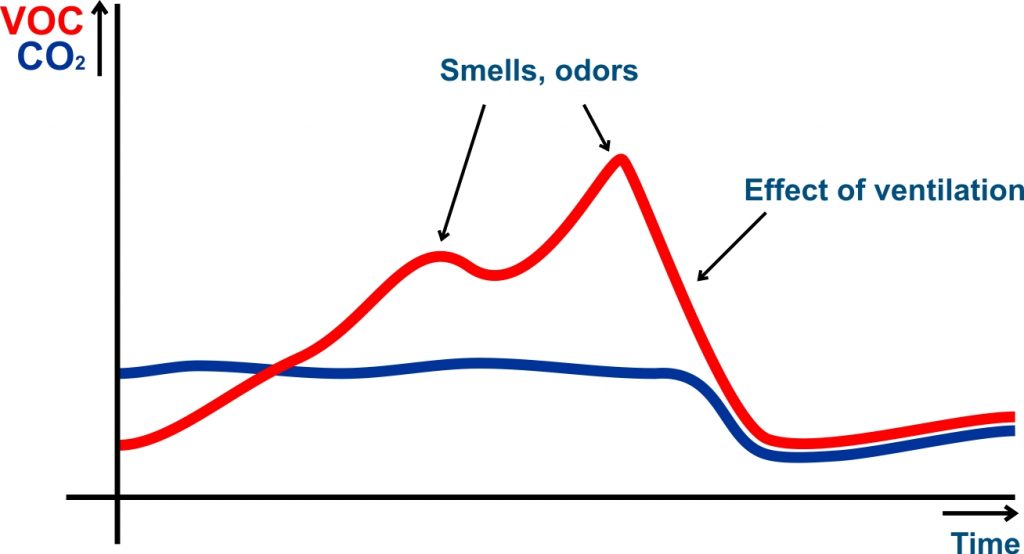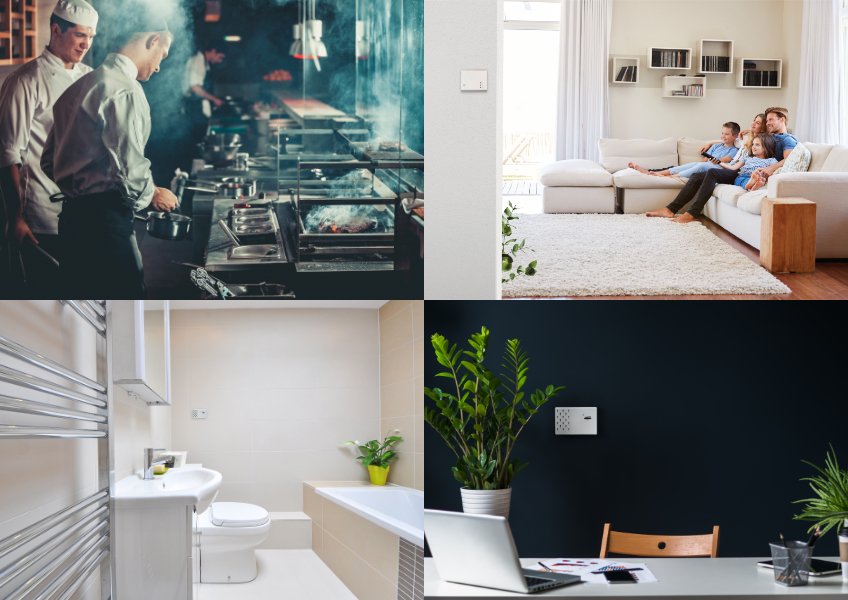What are the main indoor air pollutants?

CO2 as a good indicator of air pollution
When people stay in a confined space without adequate ventilation, the pollutant content of the air rises, as does the CO2 concentration. For this reason, the measured carbon dioxide values are mainly used to assess the level of indoor air pollution.
Carbon dioxide is therefore a particularly suitable indicator for the effective management of ventilation systems in areas where people frequently and for long periods of time stay (schools, kindergartens, department stores, offices, living rooms, bedrooms, children’s rooms…). However, the main air pollutants are so-called volatile organic compounds.
What are volatile organic compounds or VOCs?

These are different types of organic compounds that are gaseous at normal temperatures. It is estimated that there are about ten thousand types of volatile organic compounds. VOCs can have a negative impact on human health and well-being.
We can simply divide them into two groups:
- Bio-waste – generated by the metabolic activity of living organisms (breath, sweat, …) or also, for example, during cooking, baking, etc.
- Vapours from building materials, furniture, carpets, cleaning products or cosmetics, paints, etc.
The main symptoms are:
- discomfort
- reduced ability to concentrate
- drowsiness, fatigue
- headaches,
- eye irritation or even dizziness
These are essentially the pollutants that are primarily the reason for ventilation (odours). The VOC sensor is therefore most similar to the human nose’s perception of odours. See the table to the right for the main sources of VOCs.
What about a room where there is an odour but the CO2 concentration may be fine?
The type of sensor should always be selected according to the predominant use of the specific space. For example, in toilets, kitchens, cloakrooms or fitness centres, the CO2 level is often fine despite unpleasant odours and therefore the need for ventilation.
predominant use of the specific space. For example, in toilets, kitchens, cloakrooms or fitness centres, the CO2 level is often fine despite unpleasant odours and therefore the need for ventilation.
A similar situation can also occur in new buildings where you can smell the odour from paint, furniture, … this is called SBS = Sick Building Syndrome (more about SBS here).
*CO2 = carbon dioxide, a colourless, odourless gas
*VOC = Volatile Organic Compounds




